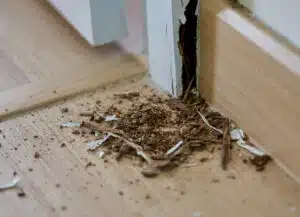There are certain pests that are known for their ability to travel over distances, and perhaps the single most notable here is the bed bug. While these frustrating pests are best known for their presence in the bedroom, a slightly lesser-known fact about them is how well they travel – they commonly attach themselves to luggage, briefcases and other items, and this is a common way their infestations can begin.
At A-1 Exterminators, bed bugs are just one of several major pest types we’re happy to assist you with preventing or removing from any space. And because we know travel tends to increase for some people around the upcoming holiday season, we figured now would be a good time to look into an important topic: How to check for and prevent bed bug transportation as you travel, especially if you’ve had issues with these pests in the past. Let’s dive into this!
How Bed Bugs Interact With Luggage
As we get started here, it’s helpful to know a bit more about how and why bed bugs are so likely to hitch a ride with travelers. Bed bugs use several methods to travel, including crawling, attaching themselves to items that are already in motion, and piggybacking on other animals, but the most common way they’ll enter a home is via luggage or other items brought into it.
In most cases, this happens via bed bug larvae that can attach themselves to the lining of a suitcase or briefcase and ride inside it, being deposited in its new environment as soon as it arrives. The adult bed bugs may also enter this way if they’re already present in the location you traveled from.
So how do you go about stopping this from happening? Our next several sections will look into this.
Initial Room Check
As you get into your travel location, whether it’s a hotel room or the home of a relative, the first thing you should do is check for bed bugs. An initial visual inspection can go a long way in terms of preventing an infestation, as catching these pests early on can prevent them from multiplying and spreading throughout your temporary home.
If you don’t see any bed bugs during your search, you’re in good shape, but if you do spot any, it’s important to alert the host or hotel management immediately so they can take action and stop these pests from spreading further.
For those staying in hotel rooms, here are some common bed bug hiding spots to consider:
- On or around the bed: The most common place you’ll find bed bugs is on or around the bed, so check the mattress and box spring for any signs of these pests.
- Around furniture: Bed bugs can also hide behind furniture, headboards, curtains, and other items near the bed.
- In drawers: Depending on their size, bed bugs may also be drawn to clothing and other items stored in drawers, so keep an eye out here as well.
- Other crevices: Your room may have other crevices and corners where these pests can hide, so use a flashlight to get an up-close look at any potential hiding spots.
Now, actual bed bugs themselves are not the only visual sign you should be on the lookout for. A more subtle sign of an infestation is what are known as “bed bug droppings,” which appear as small black spots that can indicate their presence. You may also see shed body parts in those same areas, or blood smears on bed sheets or other soft surfaces.
Secure Your Luggage
Once you’ve given your initial inspection a look, the next step is taking steps to protect yourself and your belongings from bed bugs. The most important thing to do here is to make sure your luggage doesn’t come into contact with any of the furniture or bedding in the room.
If you can, store it on a stand or shelf rather than on the floor – this will help minimize any risk of larvae attaching themselves to your belongings. When you’re ready to leave, inspect your luggage again and check for any signs of bed bugs before packing it up.
At-Home Actions to Take
Once you’ve arrived back home, there are just a few additional areas to attend to:
- Clean bags – or leave them outside: Bed bug larvae will die after a day or two in the cold, so if you can, leave your luggage outside overnight. If not, make sure to give it a thorough cleaning with hot water and detergent to kill any unwanted pests that may have hitched a ride with you.
- Wash clothes on hot: Any clothes or items that may have come into contact with bed bugs should be washed with hot water and detergent as soon as you arrive home.
- Inspect furniture: The final step is to inspect any furniture in your home for signs of bed bugs, just in case any larvae may have made it past your initial inspection and landed in your own living quarters.
By taking these steps, you can help ensure any bed bug infestations stay far away from your home. With the right preparation and vigilance, traveling with bed bugs doesn’t have to be a problem!
As you can see, there are a few key steps you can take to prevent bed bug infestations when traveling. From an initial room inspection to securing your luggage, these tips can help you make sure you don’t bring any of these pests home with you. Once back at home, it’s also important to clean your belongings and inspect furniture just in case any stowaways.
For more on this, or to learn about any of our bed bug treatments or other pest and bird control solutions, speak to our team at A-1 Exterminators today.



